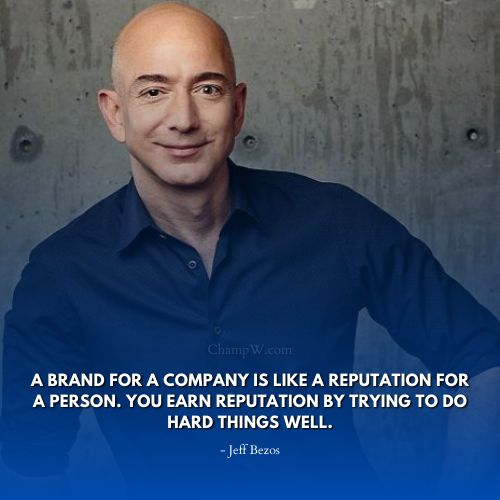Are you going to fulfill your dream of building your own business? Then the first thing that comes to your mind that which name is perfect for your new business? The answer to all your queries is responsible for us. Along with the Business names & Business Slogans we present to you 7 Mistakes to Avoid When Naming Your Business so that it can be helpful for you and don’t make any mistake which generally newbie does when naming their dream project.
Although naming your firm may appear to be a trivial consideration, it is one of the most critical and underappreciated components of your company. For years to come, this name will be associated with your brand image. It’s critical to get it right from the start.
If you want to change your name later, you’ll run into some difficulties. You don’t want to cope with that headache.
15 Tips on How to come up with a Business Name
This difficulty has immobilized some prospective business owners, who are unable to begin writing their business plan until they have decided on a name.
Here are 15 tried-and-true techniques to help you come up with a terrific name for your new business:
1. Brainstorm Business Names
A fantastic name says a lot. You should devote the time and effort necessary to locate the ideal one for your company. Make a list of all the terms and phrases that are associated with your brand. Create a shortlist of ideas using a thesaurus, comments, and business name generators.
After you’ve determined what you want your company’s name to express, set aside some time to explore names for your new venture.
Consider the words that best characterize your industry or the goods or services you provide. Consider words that define your competitors’ products and services, as well as ones that describe the contrasts between yours and theirs.
2. Be Descriptive
You can name your startup in one of two ways: descriptively (i.e., it portrays what you do) or creatively (i.e., it comes up with something altogether unique).
Each one has advantages. While descriptive names can be difficult to come up with when performing trade marketing, they do give customers a sense of what your company does.
Your company’s name and brand are inextricably linked. The name should ideally elicit pleasant emotions and provide a clear message about who you are and your positive characteristics.
3. Make it Relevant
Startup names should be related to the industry in which they operate. There’s an abundance of companies that have done this both right and wrong. And some of them are pretty hilarious. Make sure your company concept and logotype are one and the same if you want investors to take you seriously right away.
4. Avoid hard-to-spell names
Before naming your business, get to know your target market and put yourself in their shoes. Simply choose names that are simple to spell. Otherwise, you will be confronted with a slew of issues.
Assume your customers saw your ad and learned that your firm’s name is McKinsey & Company.
First and foremost, this name is difficult to read and remember, and it is possible that someone who does remember it will become confused while looking on Google or elsewhere.
5. Keep it short
Your company’s name should be easy to remember. People shouldn’t have to pause to catch their breath in the middle of reciting your name out loud. Consider some of the most well-known brands in the world.
Nike, Apple, and Walmart are three of the most well-known brands in the world.
6. Search the Secretary of State’s database.
Because you’ll almost certainly wish to form your company as a corporation or LLC, you should check the Secretary of State’s records to be sure your name isn’t confusingly similar to one that’s previously been registered. The Secretary of State may refuse to register it if it is too close to an existing name. This type of search can be assisted by your corporation lawyer.

7. Be Unique & Creative
The freedom to be creative while choosing a startup name and logotype is one of the nicest aspects of the process. You can start from the beginning and create an entirely new term. You can also add a letter to the end of a relevant word, such as Think Studio.
Drop a letter in the mail. Tumblr is a fantastic illustration of when it’s a good idea to drop one letter from a name.
8. Excellent Marketing Touchpoint
A good brand name can boost the effectiveness of your marketing efforts. After all, your domain name is one of the first points of contact between your company and its customers, and it can go a long way toward attracting and engaging your target audience.
9. Check the domain name availability
Every business should have an internet presence. It’s not just something to consider for online businesses. Your domain name should ideally match or be as similar to your company name as possible.
That is why you should conduct a domain availability check. There are numerous tools available to assist you in this endeavor.
10. Do trademark research
Once you’ve confirmed domain availability, there’s one more thing to do. You must determine whether or not someone else has trademarked your business name concept. Fortunately, this is simple.
All you have to do is go to the US Trademark Electronic Search System (TESS). Once there, you enter your business name concept. The specialized search engine conducts a trademark search and informs you if the trademark of your choice is available.
11. Obtain feedback on the name.
Make a list of five or ten potential names and run them by friends, family, and trusted colleagues. Obtain feedback from your intended audience as well. Also, make certain that the name has no negative connotations.
12. Keep your logo In mind
We’ve given a lot of advice on how to create a logo design over the last few years. We’ve discussed design best practices as well as common design blunders to avoid. Here are a few more pointers to consider when you design the most significant aspect of your business’s identification.
When developing a logo, keep the following points in mind:
- Use your company or product name;
- Make sure customers can read your logo.
- Maintain a professional tone
- Don’t Expect Your Logo to Sell or Tell Your Story
- You Don’t Need a Focus Group to Determine Whether or Not Your Logo Is Effective
- Don’t tamper with your logo once you’ve created it.
- Don’t go overboard with your logo design.
13. Tell a story
For the name of the startup, I believe this is not a necessary step to take, as most large startups did.
However, having a story behind your startup name will allow others to relate to it and will make it memorable to the majority of people.
And in some cases, if you deviate from it, your story will guide you and show you the mirror of motivation.
14. Make a Beautiful Slogan for your business
Your tagline is supposed to help you grow your business, but there are various ways it might do so. However, you’ll want to make one for a few key reasons that have a direct impact on your company’s income and growth.
It’s really easy to come up with a business tagline if you already have an idea in mind. The most difficult element is coming up with a concept.
15. Consider the Future of Your Business
It’s critical to examine the evolution of your company’s name while coming up with a name. While you may specialize in antique jewelry at first, your five-year business plan may incorporate jewellery repair or the sale of additional items. Allow your business room to expand by removing words that are excessively constraining.
Final words
Last but not least, choose a name you like! It’s your work; be proud of it because you’ll be working with it for a long time.
Consider the international market, and make certain that your company does not make any embarrassing logo mistakes by selecting names that have already been used, or by selecting a name that means something offensive in another language. It’s quite common.
